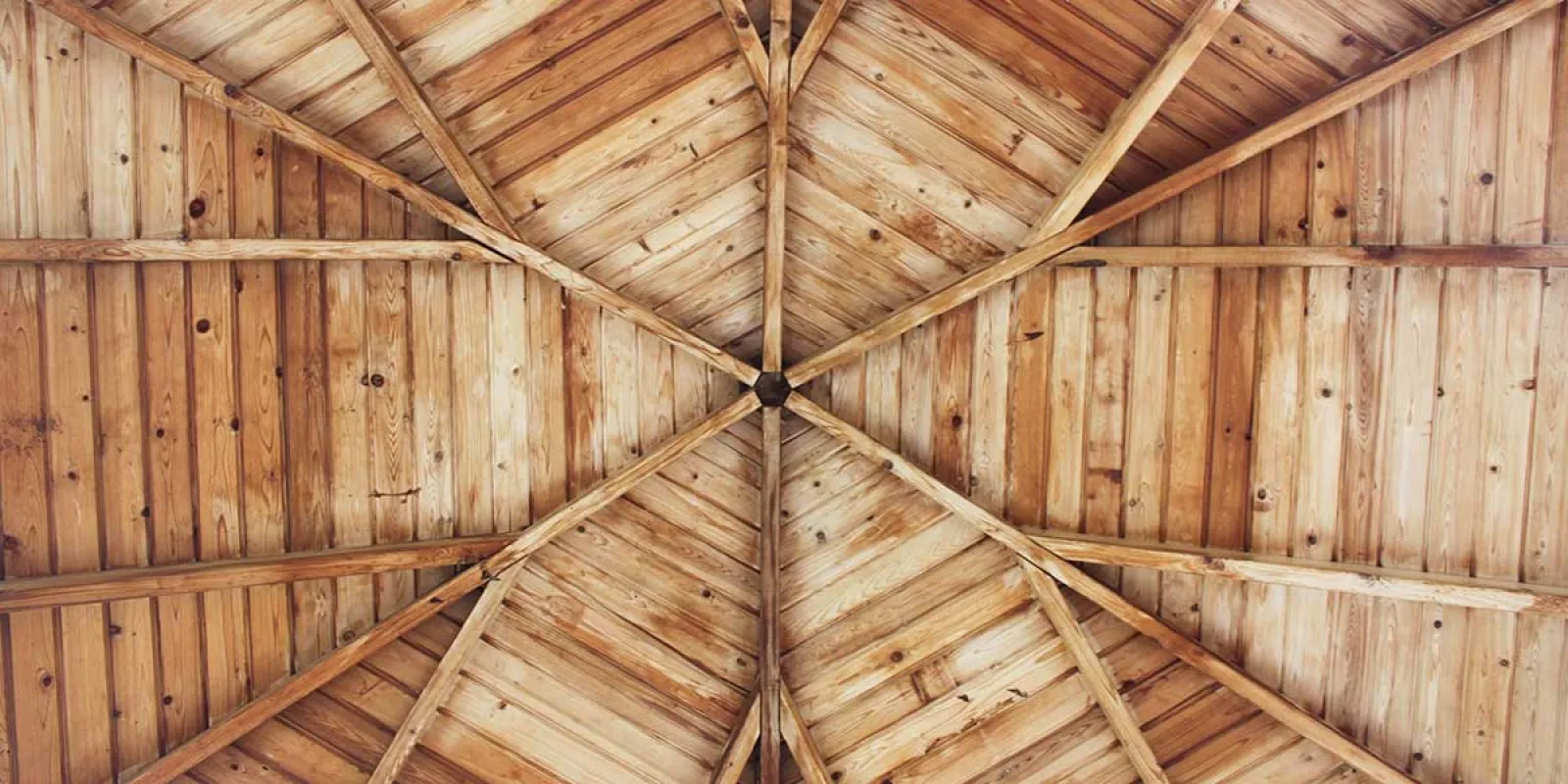Originally published April 2019. Edited April 2022.
Spring is officially here! After suffering from cabin fever all winter, you're ready to soak up some vitamin D and take on your spring projects in the great outdoors. You're well equipped to tackle your honey-do list: tool belt strapped on, sunglasses, and water bottle in tow. As you step into the back yard, you breathe in the spring air, feel the warm sun on your face, and hear the buzz of a nearby bee flying around your head. Wait, what? Bees? Oh, geez! There are bees out here!
After regaining your composure, checking to make sure no one witnessed you momentarily lose your cool, you begin your inspection to see where the bees are coming from. You don't see a nest anywhere, but after taking a closer look around, you notice several circular holes in the underside of the garden pergola. There's a small amount of sawdust down below. As another bee performs a fly-by maneuver past you and you get a better look at him, you realize it's not a bumblebee. You, my friend, have carpenter bees.
Carpenter bees are quite common in the south. At approximately 1" in length, these wood-boring bees are slightly larger than other bees. They have yellow markings on their back, but have a smooth abdomen, unlike bumblebees which are furry all over. These bees rarely pose a problem for humans, other than damage they can cause to wood structures. While male carpenter bees do not have the ability to sting, female carpenter bees can sting, but will only do so if seriously provoked or threatened.
The most common problem associated with carpenter bees is structural damage. Not only do they drill holes in wood, but also stain buildings by defecating on the walls below their nest. These insects bore rounded holes, roughly 5/8" in size. You may notice frass (sawdust) coming out of the hole or nearby where the female has been excavating. While she doesn't eat the wood, she will use this hole to craft a tunnel that she will fill with pollen and later lay an egg. The eggs will reach adulthood within 30-95 days.
Carpenter bees are most likely to attack bare, unfinished wood like cedar, pine, and cypress. These insects commonly nest in the eaves, window trims, and facia boards around your home. They can also be found in the siding, wooden decks, posts, hand and porch rails, outdoor furniture, and log homes.
Treatment and Prevention of Carpenter Bees
Treatment for carpenter bees is a bit tricky. A liquid treatment can be applied to a small affected area where the bees have been excavating, along with a dust treatment inside the nesting tunnels. The real buzzkill here is there isn't a 100% effective way to treat for carpenter bees. The treatment will only affect the insects it comes in contact with. On the bright side, carpenter bees are pollinators, so their existence is pretty important to our ecosystem.
The best way to protect your home from future attacks is to paint all wooden structures as a deterrent. Carpenter bees are more likely to bore into unfinished wood, so by adding any finish, even a wood stain, you can help prevent the bees from causing damage to your home. Be sure to treat your home as soon as you see signs of carpenter bees. Even though you can go ahead and plug up the holes after treatment, we recommend waiting until late summer to do so. If eggs hatch inside plugged holes, the adults will make new tunnels to exit the structure, doing further damage. It's important to plug these holes so that bees do not return to them to overwinter.
Many people have had great success using carpenter bee traps. These can be purchased online or easily built by anyone with a knack for diy projects. This video gives instructions on a simple carpenter bee trap build.
As always, Cingo is here to help. If you prefer to skip adding an extra item to your to-do list, contact us to assist with these seasonal invaders.
About Cingo: The name Cingo means to surround and secure, conveying the company's commitment to home protection. The company has been protecting families in the Southeast since 1974. It provides home protection services throughout Georgia and South Carolina, including Atlanta, Augusta, Charleston, Douglas, Dublin, Milledgeville, Savannah, Vidalia, Waycross and all points in between. Cingo was named a Best Place to Work in Georgia by Georgia Trend Magazine and listed as a National Best & Brightest Company to Work For. Learn more at www.cingohome.com.

